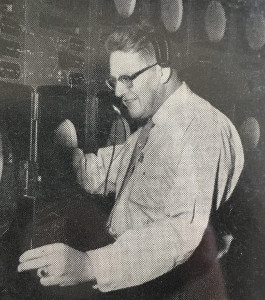First Scientist of Alaska: William Healey Dall

Author:
Edward A Herron
Publication:
1961 by Julian Messner, Inc.
Genre:
Biography
Series:
Messner Shelf of Biographies (World History)
Current state:
This book has been evaluated and information added. It has not been read and content considerations may not be complete.
Book Guide
Search for this book used on:
William Healey Dall was the first American naturalist to penetrate the vast wilderness of Alaska. His adventures began with a mammoth project to link the world by telegraph, as Western Union raced to stretch a line across the United States to meet the Siberian line that would connect in Alaska. His job was to map the safest route through the vast uncharted area, at the same time collecting specimens for the Smithsonian Institution.
Dall traveled thousands of dangerous miles through Alaska and the Aleutian Islands as a member of the U.S. Coast Survey, and served as paleontologist for the U.S. Geological Survey, becoming an authority on mollusks. A superb reporter, his books and articles are still a guide to scholars today, and his marine, botanical and geological specimens are treasured at the Smithsonian Institution as invaluable contributions to science.
Science fascinated Dall from boyhood, and he hated his job as a clerk in a Boston firm. He was more concerned with research than with talk of the Civil War which swirled about him -- until he was arrested on suspicion of espionage and nearly hanged. Professor Louis Agassiz, with whom young Dall studied, cleared him, and he went on to work at Harvard University, then volunteered for the Union Army. President Lincoln wisely sensed Dall's destiny and said, "Don't wait to get on with your scientific work, son. The war is nearly over."
So William Healey Dall started serious work in science in the far stretches of Alaska, facing unknown terrors and incredible hardships. On a lone trek, hungry and helpless, he was snow-blinded and staggered into the hideout of Tonso McCrae, the Confederate outlaw whose fate was strangely and hauntingly linked with his own.
Working against time and hazardous conditions, against Indian threats of death to all white men, Dall nevertheless made astonishing scientific discoveries, including the skull of an elephant, proving that Alaska was once a jungle. And there was a personal and deeply emotional quest -- the long search for Tonso McCrae, who was a hero to the South but an outlaw in the North. Ironically, when the United States bought Alaska and Dall raised our flag over the territory, he doomed his friend.
A hundred thousand spectacular, bizarre figures have tramped across the well-lighted Alaskan stage and disappeared forever. It was left for William Healey Dall, the man who ignored the chase for gold while pursuing a love of nature, to stamp his name for all time upon the fabulous land.
*Jacket by Rus Anderson
From the dust jacket
Content Guide
Please sign in to access all of the topics associated with this book and view other books with the same topics.
Please sign in to access the locations this book takes place in and view other books in the same location.
Please sign in to access the time periods this book takes place in and view other books in the same time period.
Find This Book
Search for this book used on:


